|
Multikine® Mechanism of Action
Multikine® works in a comprehensive way to marshal an effective killing of the tumor:
| |
• |
Multikine® attacks multiple antigens on the cancer cells. |
|
| |
|
|
|
| |
• |
Multikine® directly kills cancer cells; The various cytokines present in Multikine®, such as TNF, IL-1, along with other cytokines, are responsible for this activity. |
|
| |
|
|
|
| |
• |
Multikine® signals the immune system to mount an effective and sustainable anti-tumor immune response; Multikine® changes the type of cells that infiltrate and attack the tumor from the ‘usual’ CD-8 cells to CD-4 cells. These CD-4 cells bring about a more robust anti-tumor response. |
|
| |
|
| |
|
|
|
| |
• |
This is extremely important because the tumor is able to shut down the infiltrating CD-8 cells, but is unable to shut down the CD-4 cell attack. In addition, CD-4 cells help break “tumor tolerance,” thereby allowing the immune system to recognize, attack, and destroy the tumor. The normal immune system is ‘blind’ to tumor cells because the tumor cells are derived from the body’s own cells, and thus the body ‘thinks’ of the tumor as ‘self’, a phenomenon also known as ‘tumor tolerance’. |
|
| |
|
|
|
|
|
| |
• |
Multikine® renders the remaining cancer cells much more susceptible to radiation and chemotherapy treatment, thereby making these treatments much more effective. |
|
Multikine®’s effect on recurrence of cancer; Radiation, chemotherapy and surgery do not always succeed in killing all the tumor cells. The persistence of cancerous cells is responsible for cancer recurrence.
Multikine®is injected around the tumor and in the vicinity of the local lymph nodes because these are the areas in which metastases most likely develop and where the cancer will recur. Multikine® unleashes and empowers the immune system to target and kill those tumor cells before they can cause tumor recurrence. (Click image to enlarge)
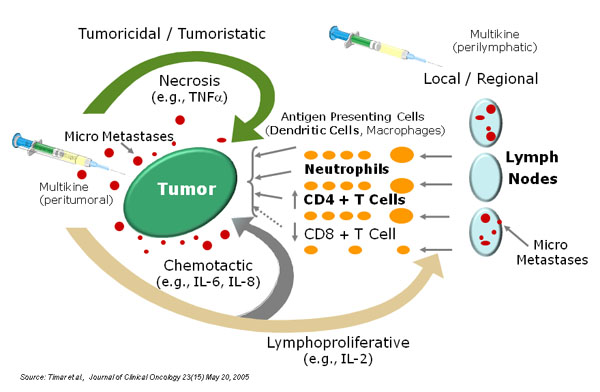
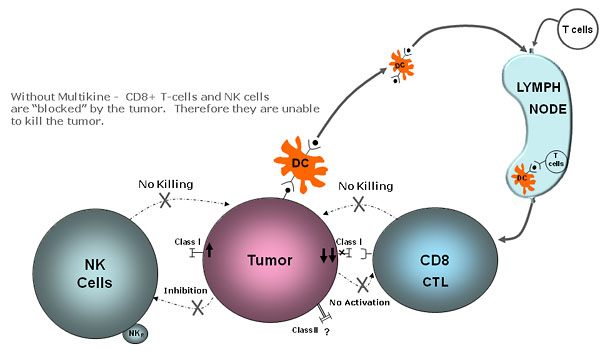
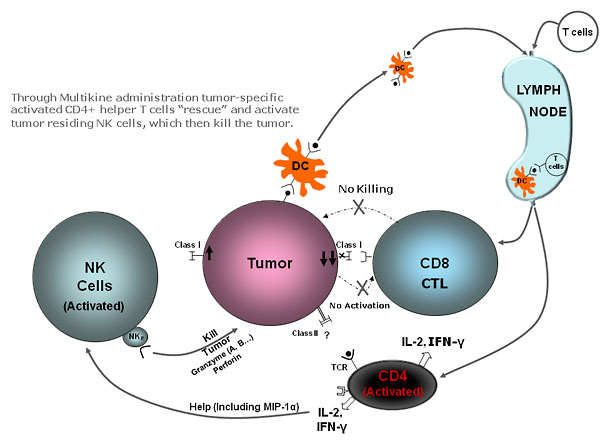
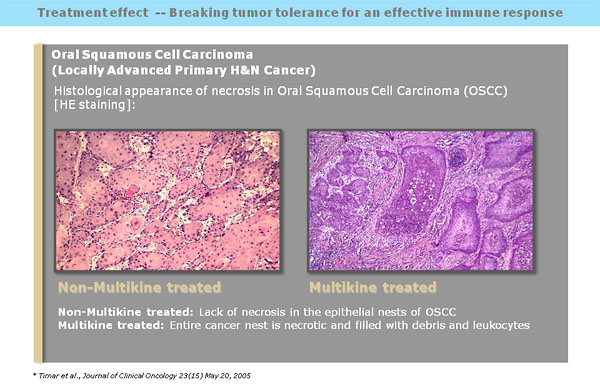
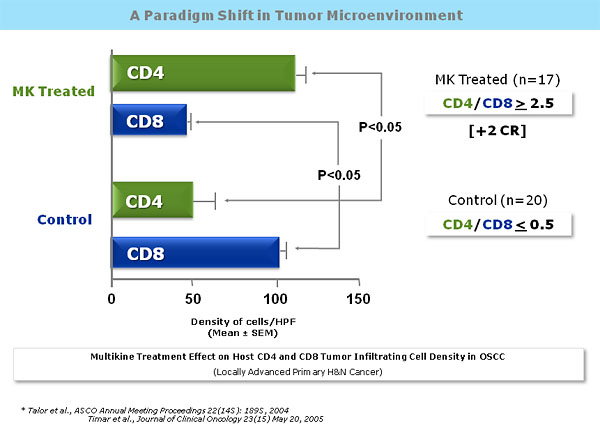
|

